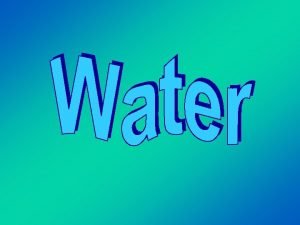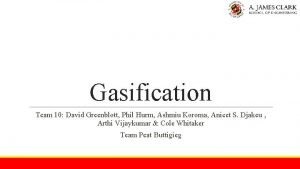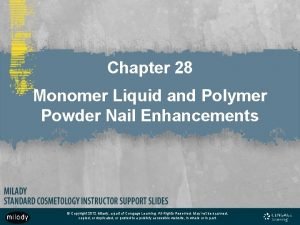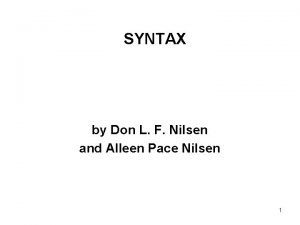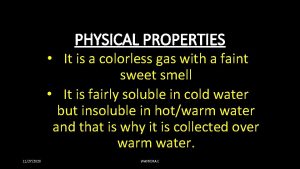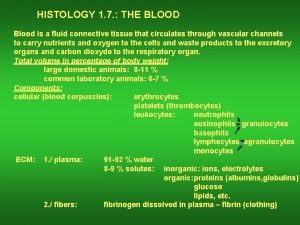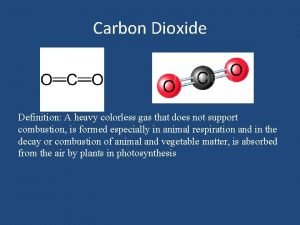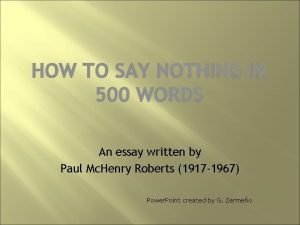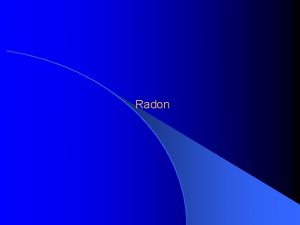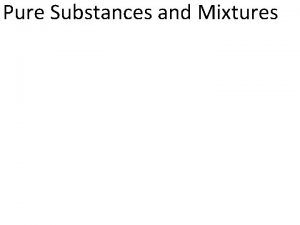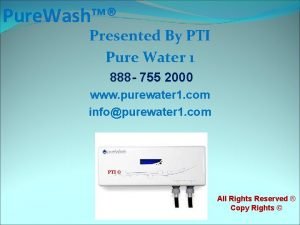Introduction Pure water is colorless tasteless and odorless











- Slides: 11

Introduction

• Pure water is colorless, tasteless, and odorless. It is an excellent solvent that can dissolve most minerals that come in contact with it. This is the reason that there is really no such thing “pure water” in nature; it always contains chemical and biological impurities.

• During precipitation or passage over and through land, water picks up a wide variety of dissolved and suspended impurities. As rain falls through the atmosphere, dissolved oxygen, nitrogen, carbon dioxide and other gases dissolve indecently. It also picks up dust, dirt and acid fumes and other impurities.

• At the ground surface, the water picks up silt, microorganism and a wide variety of organic and inorganic compounds. As water percolates into the ground it will dissolve various mineral that come in contact with it during its passage through the soil strata.

• The primary goals of a water treatment plant for over a century have remained the same: produce water that is biologically and chemically safe, is appealing to consumer and is noncorrosive and nonscaling.

Water Resources Source of Raw Water Supply: River/Sea. Ground Water. Lake. Impounding Reservoir. Important Issues: Available yield of water source. 7 -days low flow. Minimum low level and maximum flood (high) level.

Quality Good water quality (refer water quality guide lines). Free from pollutants. Accessibility Good accessibility to intake is necessary for periodic maintenance.

Source of Raw Water (1) River or Surface Water. (80%) Advantages : Readily available. Easier method of treatment. Disadvantages : Exposed to pollutions upstream. High suspended solid due to land development or foresting. High variation between low flow and high flow that will effect the selection of pump.

Source of Raw Water (Cont’d) (2) Lake / Impounding Reservoirs (18%). Advantages : Good water quality. Low suspended Solid. Disadvantages : High Iron and Manganese. High coloured water.

Source of Raw Water (3) Ground Water (2%) Advantages : Good water quality. Low suspended Solid. Disadvantages : High Iron and Manganese Once polluted, difficult to treat. Limited yield.

Source Selection The most effective approach of assuring that water system meets the regulations is to select a good quality source. ♦ Regardless of the source type, extreme care should be taken to locate all potential sources of contamination. ♦
 Is pure water colorless
Is pure water colorless It is colourless and odourless
It is colourless and odourless Water and water and water water
Water and water and water water Is syngas odorless
Is syngas odorless Monomer liquid and polymer powder nail enhancements
Monomer liquid and polymer powder nail enhancements Topicalization
Topicalization Colorless green ideas sleep furiously
Colorless green ideas sleep furiously Nitrogen is a colorless gas physical or chemical
Nitrogen is a colorless gas physical or chemical Eosinophil histology
Eosinophil histology Colorless gas
Colorless gas Colorless words meaning
Colorless words meaning Overgeneralization
Overgeneralization

